A captivating array of hawks graces the skies in Ohio, each species contributing to the state’s vibrant avian tapestry.
Among the diverse raptors that call Ohio home, nine distinct hawk species stand out, showcasing a spectrum of sizes, behaviors, and habitats.
From the agile Cooper’s Hawk to the soaring Red-tailed Hawk and the elusive Sharp-shinned Hawk, these birds of prey captivate observers with their aerial prowess.
In this exploration, we delve into the characteristics, habitats, and conservation considerations for each of these nine hawk species, shedding light on their intricate role in Ohio’s ecosystems.
Join us in unraveling the fascinating world of the 9 Species of Hawks of Ohio and discover the unique stories written across the state’s expansive skies. Stay focused.
9 Hawks Of Ohio
Go through the diverse hawks and owls that grace the skies of Ohio. Each species adds a unique charm to the state’s avian tapestry, from the sleek Cooper’s Hawk to the majestic Osprey and the mysterious Barn Owl.
Explore the lifestyles and characteristics of these fascinating birds as we delve into the world of Ohio’s raptors.
1. Cooper’s Hawk
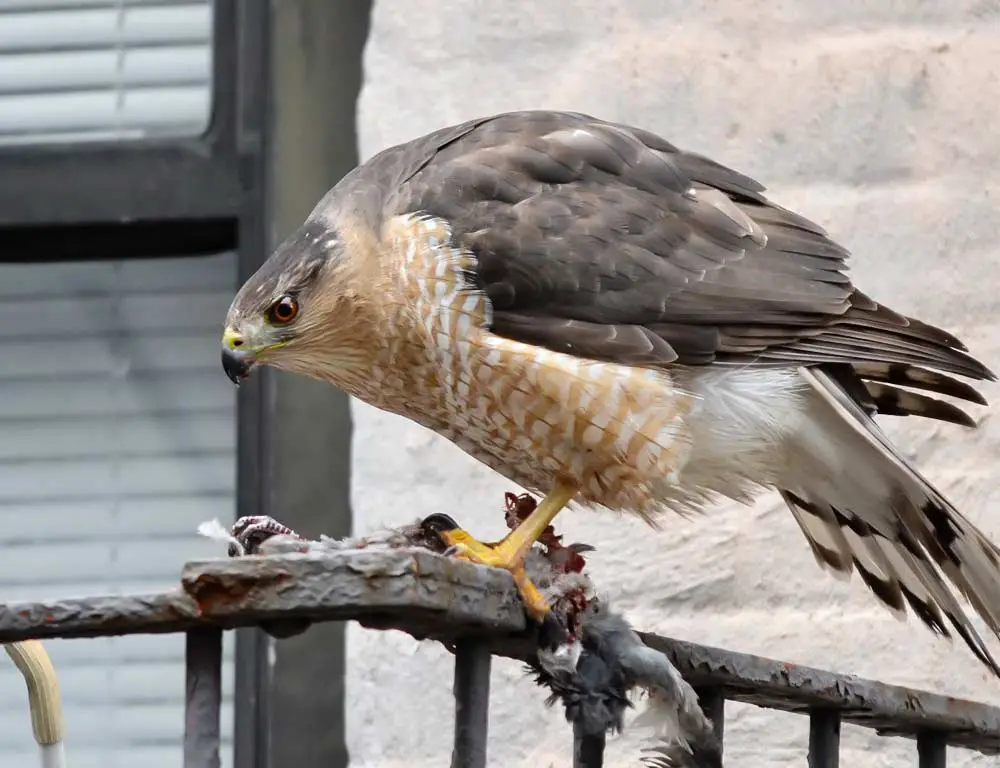
- Scientific name: Accipiter cooperii
- Population: Common, with stable numbers
- Life span: 7-10 years
- Size: 14-20 inches
- Weight: 0.5-1.5 pounds
- Wingspan: 24-35 inches
- Status: Least Concern
The Cooper’s Hawk is a medium-sized bird of prey found throughout Ohio, thriving in various habitats. Recognized for its sharp, agile flight, this hawk is an adept hunter, preying mainly on small to medium-sized birds.
With a preference for forested areas, these hawks are adaptable and can also be spotted in suburban and urban environments
Cooper’s Hawks are known for their impressive speed and maneuverability, which they utilize during pursuit flights through dense vegetation.
Their breeding season involves building nests in tall trees, where they raise their young. These hawks are known to be territorial and will defend their nesting areas vigorously.
2. Red-tailed Hawk
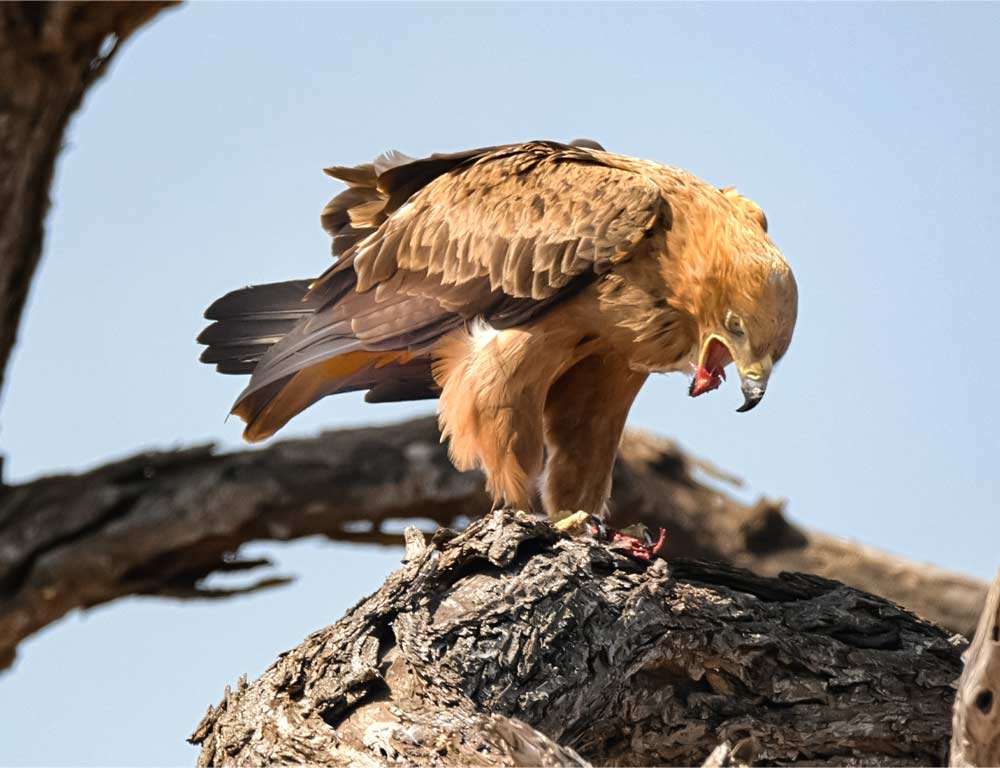
- Scientific name: Buteo jamaicensis
- Population: Abundant, with increasing numbers
- Life span: 10-21 years
- Size: 18-26 inches
- Weight: 2-4 pounds
- Wingspan: 45-52 inches
- Status: Least Concern
The Red-tailed Hawk is a large and widespread raptor found across Ohio. Known for its distinctive reddish-brown tail, this hawk favors open landscapes, including fields, grasslands, and forests.
As a versatile hunter, it preys on small mammals, birds, and reptiles. Red-tailed Hawks are often seen perched on high vantage points, using their keen eyesight to spot prey.
They are also known for their soaring flight patterns, utilizing thermals to cover large distances. Breeding pairs build nests in trees or on cliffs, and their impressive territorial displays involve aerial acrobatics.
3. Sharp-shinned Hawk
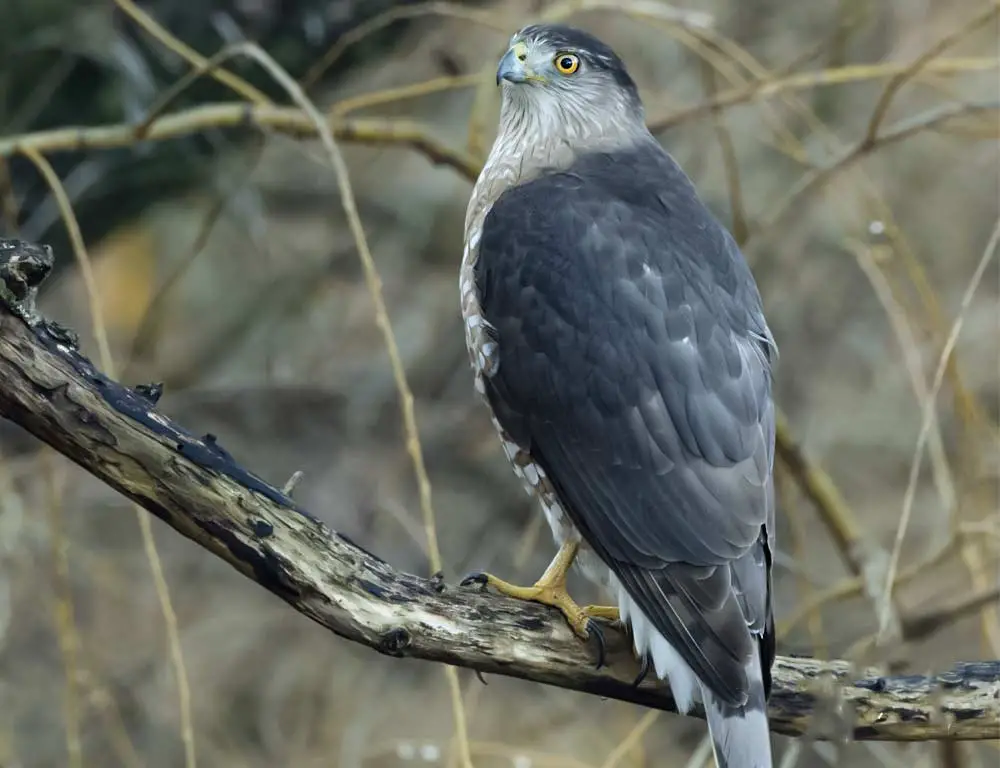
- Scientific name: Accipiter striatus
- Population: Common, with stable numbers
- Life span: 6-10 years
- Size: 9-14 inches
- Weight: 3-7 ounces
- Wingspan: 16-22 inches
- Status: Least Concern
The Sharp-shinned Hawk, the smallest among these Ohio hawks, is a swift and agile predator found in various habitats, including woodlands and urban areas.
Primarily preying on small birds, they are adapted for flying through dense vegetation in pursuit of their prey. Sharp-shinned Hawks are known for their secretive behavior, using cover to approach and surprise their quarry.
During the breeding season, they construct nests in trees. Their migratory behavior makes them a common sight during the fall and spring as they travel between their breeding and wintering grounds.
4. Northern Harrier
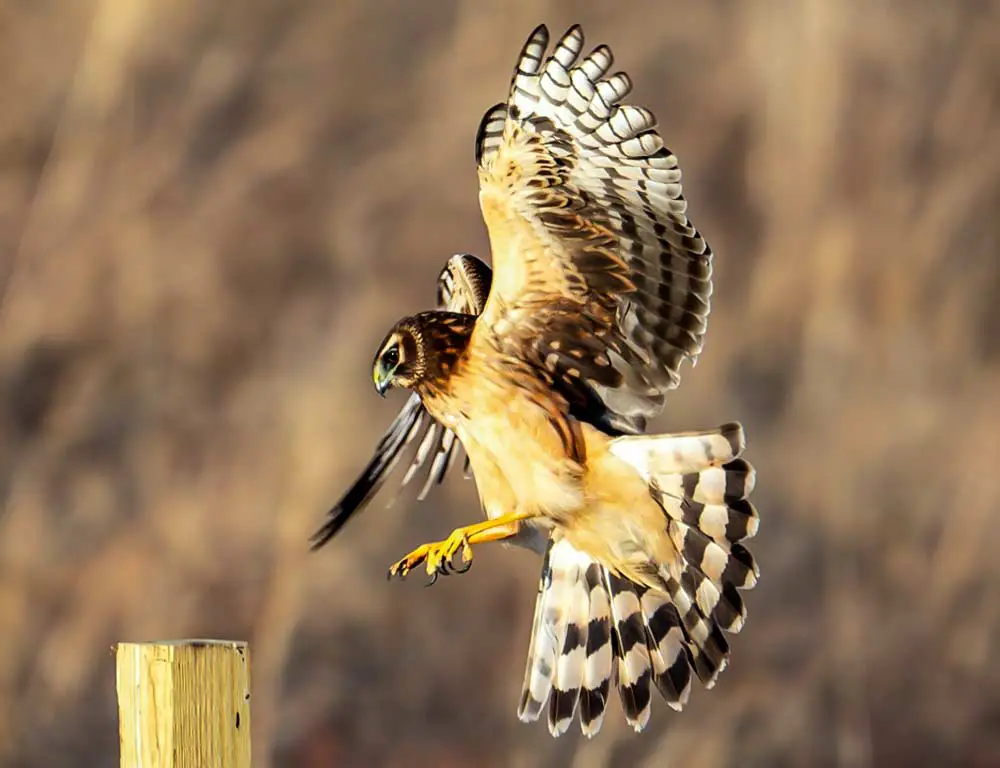
- Scientific name: Circus hudsonius
- Population: Stable, with varying regional numbers
- Life span: 5-10 years
- Size: 18-24 inches
- Weight: 10-26 ounces
- Wingspan: 40-48 inches
- Status: Least Concern
The Northern Harrier, known for its owl-like facial disk, is a hawk that frequents marshes, grasslands, and open areas.
With its distinctive hunting behavior, this harrier glides low over the ground, using its keen hearing to detect prey. It primarily feeds on small mammals and birds.
Breeding pairs create nests on the ground, hidden in tall grasses or marsh vegetation. Northern Harriers are known for their polygynous mating system, where one male may mate with multiple females.
They are highly migratory, shifting populations based on food availability and seasonal changes.
5. Northern Goshawk
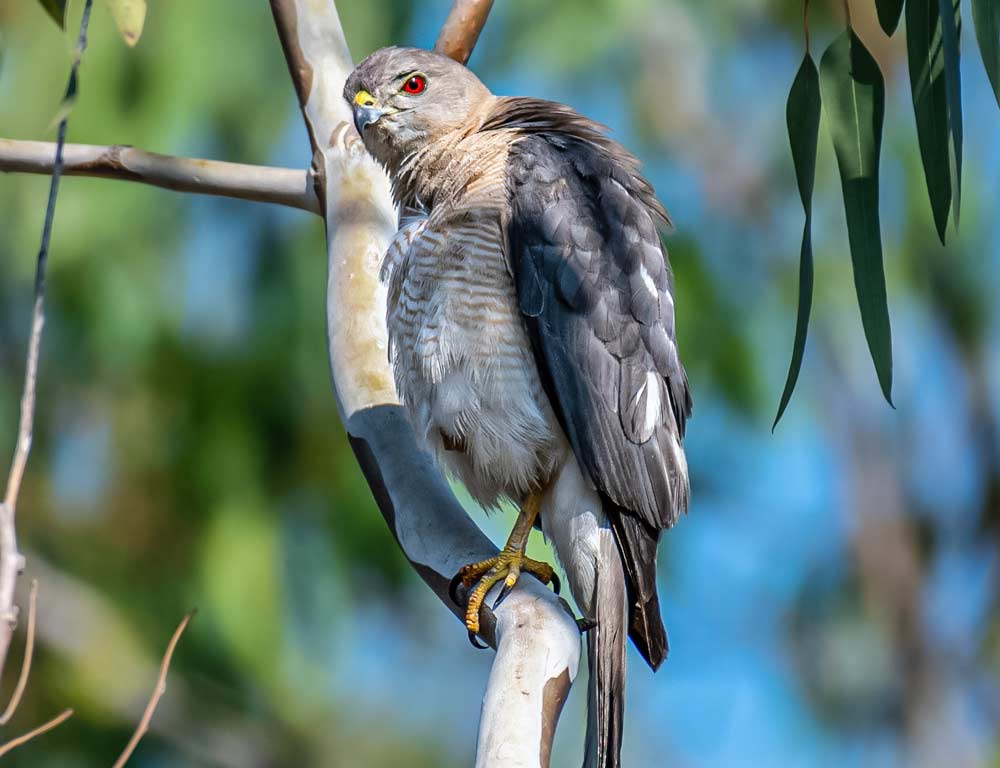
- Scientific name: Accipiter gentilis
- Population: Stable, with some regional variations
- Life span: 7-16 years
- Size: 20-26 inches
- Weight: 22-48 ounces
- Wingspan: 40-46 inches
- Status: Least Concern
The Northern Goshawk is a powerful and secretive hawk that inhabits coniferous and mixed forests. Recognized for its robust build and fierce hunting skills, it preys on medium-sized birds and mammals.
This hawk is known for its agile flight and ability to navigate dense forests easily. During the breeding season, Northern Goshawks construct nests in tall trees, and they vigorously defend their territories.
Known for their adaptability, these hawks may also inhabit urban areas. They are particularly sensitive to disturbances, and habitat preservation is crucial for their conservation.
6. Osprey

- Scientific name: Pandion haliaetus
- Population: Increasing, with successful conservation efforts
- Life span: 7-15 years
- Size: 21-24 inches
- Weight: 2-4 pounds
- Wingspan: 54-72 inches
- Status: Least Concern
The Osprey, often called the fish hawk, is a distinctive raptor that dwells near freshwater habitats. Specialized for fishing, it has reversible outer toes and large, curved talons to grasp fish.
Ospreys are commonly seen hovering over the water before plunging feet-first to catch their prey. These hawks build large nests on man-made structures like utility poles or artificial platforms.
Ospreys are highly migratory, traveling great distances between breeding and wintering grounds. Successful conservation programs, including the installation of nesting platforms, have contributed to the rebound of Osprey populations in many regions.
7. Swainson’s Hawk
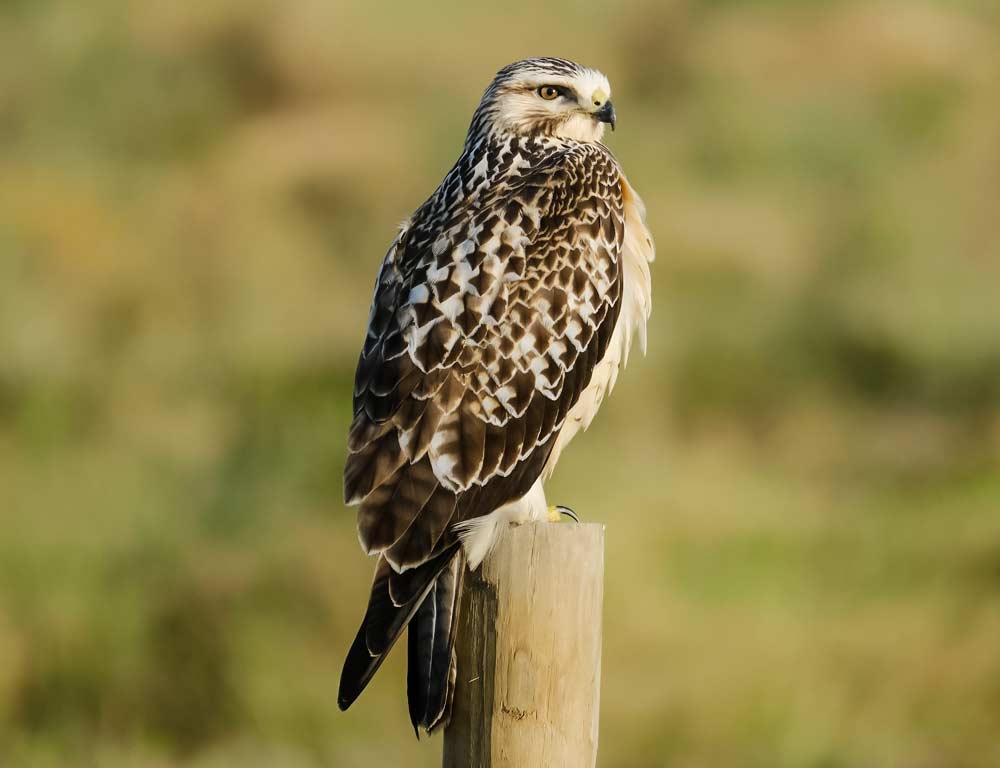
- Scientific name: Buteo swainsoni
- Population: Stable, with some regional fluctuations
- Life span: 10-15 years
- Size: 18-22 inches
- Weight: 1-2 pounds
- Wingspan: 48-54 inches
- Status: Least Concern
Swainson’s Hawks are migratory raptors known for their long-distance journeys between North and South America.
They breed in open grasslands and prairies, nesting on the ground or in low vegetation. Large groups can be seen soaring together during migration in a distinctive kettle formation.
These hawks primarily feed on small mammals and insects. Their adaptable nature allows them to thrive in agricultural landscapes, where they often hunt for rodents in fields.
Conservation efforts are essential, especially regarding pesticide use, as it can impact their food sources and nesting success.
8. American Kestrel
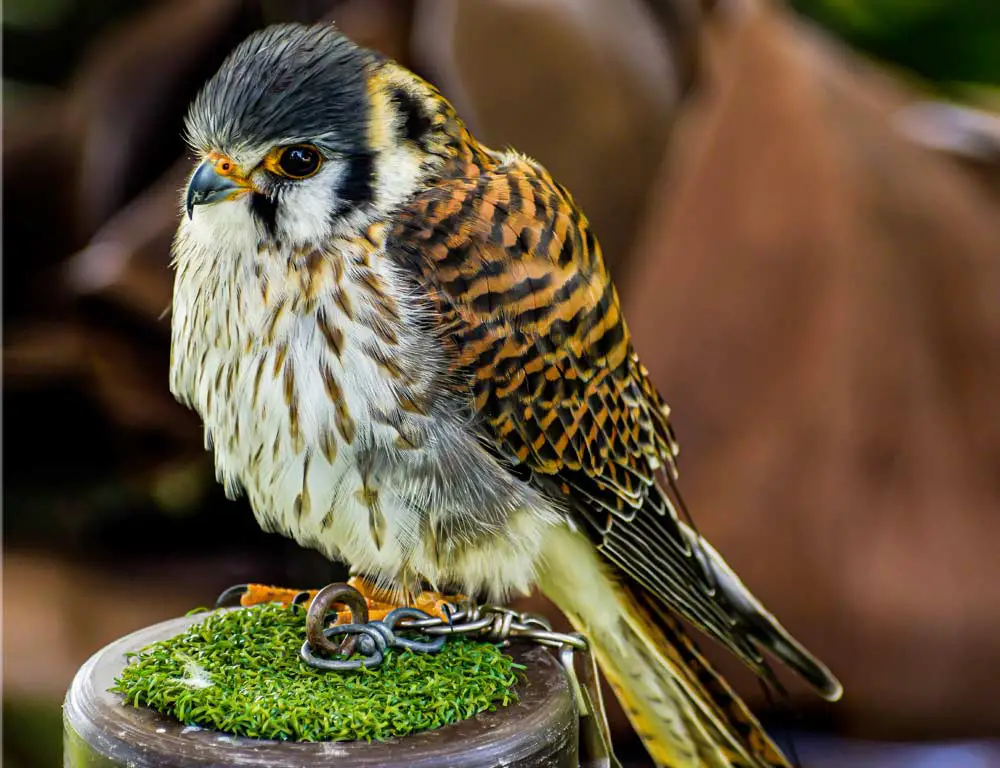
- Scientific name: Falco sparverius
- Population: Stable, with some decline in certain regions
- Life span: 5-10 years
- Size: 8-12 inches
- Weight: 2-6 ounces
- Wingspan: 20-24 inches
- Status: Least Concern
The American Kestrel, North America’s smallest falcon, is a highly adaptable bird found in diverse habitats, including grasslands, forests, and urban areas.
Known for their striking coloration, these kestrels feed on insects, small mammals, and birds. They are cavity-nesting birds, utilizing tree hollows or nest boxes.
American Kestrels are often seen perched on wires or poles, scanning the surroundings for prey. Conservation measures, such as providing nest boxes and preserving open spaces, are crucial for their continued well-being.
9. Barn Owl

- Scientific name: Tyto alba
- Population: Widespread but declining in some areas
- Life span: 1-5 years (wild), up to 20 years (captivity)
- Size: 12-16 inches
- Weight: 14-24 ounces
- Wingspan: 39-49 inches
- Status: Least Concern
Barn Owls are nocturnal hunters known for their heart-shaped facial discs and silent flight. They inhabit various environments, including grasslands, farmlands, and urban areas.
Barn Owls feed primarily on small mammals, using their excellent hearing to locate prey in the dark.
These owls nest in natural or man-made cavities like barns or hollow trees. Pesticide use and habitat loss are significant threats to their populations.
Conservation efforts involve providing suitable nesting sites and minimizing the use of harmful chemicals in their habitats.
How to Preserve Hawks in Ohio?
In preserving the rich avian heritage of Ohio, safeguarding the diverse hawk species is paramount. These majestic birds play a crucial role in maintaining ecological balance.
Here, we delve into some of the effective strategies to ensure the continued well-being of Ohio’s hawks, safeguarding their habitats, promoting conservation awareness, and mitigating potential threats.
Habitat Preservation
Preserving and protecting the diverse habitats crucial to Ohio’s hawk populations is paramount for their sustained well-being.
This entails a multifaceted approach aimed at maintaining the integrity of ecosystems, guaranteeing the availability of suitable nesting sites, abundant food sources, and unobstructed migration routes.
Suitable Nesting Sites
Conserving natural landscapes and protecting trees, cliffs, and other structures instrumental for nesting is essential.
Preservation efforts should prevent habitat destruction and promote sustainable land-use practices to maintain undisturbed areas where hawks can build and raise their nests.
Abundant Food Sources
Safeguarding the ecosystems that sustain prey populations is integral to the survival of hawks.
By addressing factors such as pollution, overfishing, and habitat degradation, conservationists contribute to the availability of diverse and plentiful food sources for these raptors.
Conservation Education
Implementing comprehensive educational programs is crucial in cultivating public awareness regarding hawks’ pivotal role in Ohio’s ecosystems.
By disseminating knowledge about their ecological significance, behavioral patterns, and the interconnectedness of species, these initiatives aim to instill a sense of responsibility and appreciation among communities.
Through workshops, school programs, and outreach efforts, individuals become active participants in the conservation journey, fostering a collective commitment to the well-being of Ohio’s hawk populations.
Mitigation of Human Threats
To ensure the safety of hawks, targeted measures must be developed and enforced to minimize human-induced threats. This includes addressing issues such as collisions with structures, habitat destruction, and pollution.
Implementing regulations, conducting impact assessments, and raising public awareness about responsible practices can significantly mitigate these threats.
By safeguarding hawks from anthropogenic dangers, their habitats remain intact, contributing to a healthier and more sustainable environment for both the birds and the communities they inhabit.
Monitoring and Research
Regular monitoring and research initiatives are essential for gaining insights into hawk populations, behaviors, and overall health.
Scientists can collect invaluable data by employing advanced tracking technologies and conducting field studies. This information facilitates the development of informed conservation strategies and adaptive management plans.
Continuous research ensures that conservation efforts remain dynamic and responsive to Ohio’s hawk species’ evolving needs and challenges.
Establishment of Protected Areas
Designating and maintaining protected areas tailored to the specific needs of hawks is critical for their conservation.
These areas serve as sanctuaries, providing undisturbed habitats where hawks can nest, forage, and thrive without undue disturbances.
Preservation efforts focus on securing sufficient space and resources to support these birds’ natural behaviors and life cycles, contributing significantly to their long-term survival.
Collaborative Conservation Efforts
Fostering collaboration among government agencies, conservation organizations, and local communities is key to developing comprehensive and effective conservation plans.
By pooling resources, expertise, and local knowledge, stakeholders can create synergistic strategies that address the diverse challenges faced by Ohio’s hawk species.
This collaborative approach ensures a more holistic and sustainable conservation effort, maximizing the impact of initiatives aimed at preserving the intricate balance of Ohio’s ecosystems and securing the future of its hawk populations.
Wrapping Up
Our exploration into preserving Ohio’s hawks shows that a collective commitment to habitat protection, education, and proactive conservation measures is essential.
By valuing these magnificent birds and implementing thoughtful strategies, we can ensure the enduring presence of hawks in Ohio’s skies.
Let our efforts stand as a testament to our responsibility as stewards of the environment, striving to maintain the delicate balance of nature. Thank you for your support.